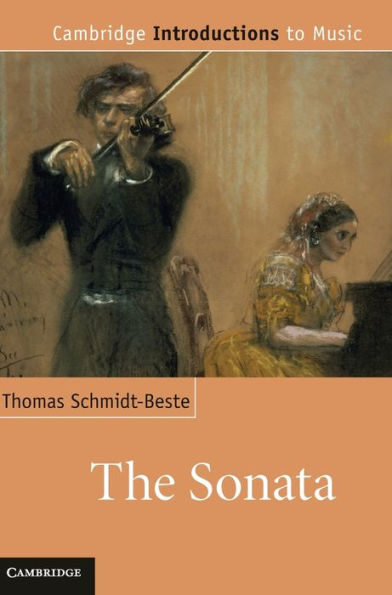The Sonata
What is a sonata? Literally translated, it simply means ‘instrumental piece'. It is the epitome of instrumental music, and is certainly the oldest and most enduring form of ‘pure' and independent instrumental composition, beginning around 1600 and lasting to the present day. Schmidt-Beste analyses key aspects of the genre including form, scoring and its social context – who composed, played and listened to sonatas? In giving a comprehensive overview of all forms of music which were called ‘sonatas' at some point in musical history, this book is more about change than about consistency – an ensemble sonata by Gabrieli appears to share little with a Beethoven sonata, or a trio sonata by Corelli with one of Boulez's piano sonatas, apart from the generic designation. However, common features do emerge, and the look across the centuries – never before addressed in a single-volume survey – opens up new and significant perspectives.
"1136270741"
The Sonata
What is a sonata? Literally translated, it simply means ‘instrumental piece'. It is the epitome of instrumental music, and is certainly the oldest and most enduring form of ‘pure' and independent instrumental composition, beginning around 1600 and lasting to the present day. Schmidt-Beste analyses key aspects of the genre including form, scoring and its social context – who composed, played and listened to sonatas? In giving a comprehensive overview of all forms of music which were called ‘sonatas' at some point in musical history, this book is more about change than about consistency – an ensemble sonata by Gabrieli appears to share little with a Beethoven sonata, or a trio sonata by Corelli with one of Boulez's piano sonatas, apart from the generic designation. However, common features do emerge, and the look across the centuries – never before addressed in a single-volume survey – opens up new and significant perspectives.
95.0
In Stock
5
1

The Sonata
278
The Sonata
278Hardcover(New Edition)
$95.00
95.0
In Stock

Product Details
| ISBN-13: | 9780521762540 |
|---|---|
| Publisher: | Cambridge University Press |
| Publication date: | 03/10/2011 |
| Series: | Cambridge Introductions to Music |
| Edition description: | New Edition |
| Pages: | 278 |
| Product dimensions: | 6.90(w) x 9.80(h) x 0.70(d) |
| Language: | German |
About the Author
From the B&N Reads Blog
